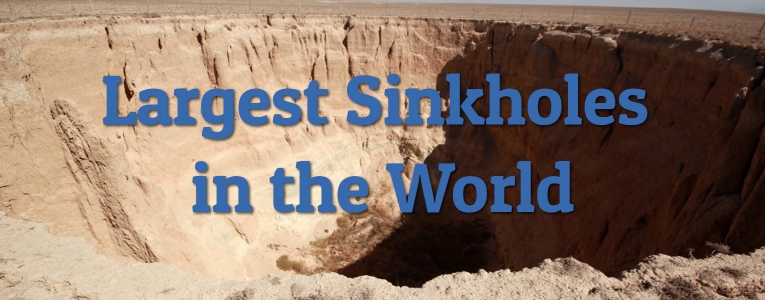Just how large can these astounding natural formations get? Some of them are big enough to devour entire buildings or create caverns so large that they contain their own ecosystems. Today we’ll be taking a look at 11 of the largest sinkholes in the world, measured by depth.
-
Guatemala City Sinkhole
Location: Guatemala
Width: 60 feet
Nearby Landmarks: Valle de la Ermita
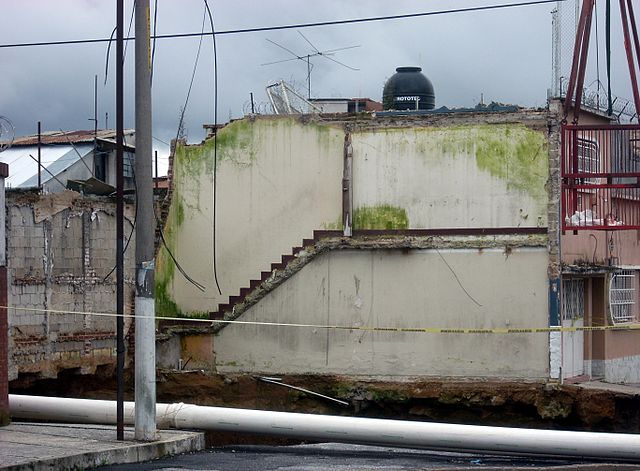
Source: wikimedia.org
While sinkholes are normally formed by dissolving deposits of stone such as limestone or gypsum, the sinkhole in Guatemala City was different: It was caused by erosion of volcanic pumice underground. The fragile volcanic rock was likely eroded by broken piping beneath the buildings and infrastructure that once stood, finally sinking after the floods of Tropical Storm Agatha.
Did You Know?
Because the pumice beneath Guatemala City eroded so much more quickly than limestone, this devastating sinkhole appeared very suddenly and with little warning.
-
Nongle Sinkhole
Location: Guangxi Zhuang Autonomous Region, China
Width: 66 feet
Nearby Landmarks: Detian Transnational Waterfall
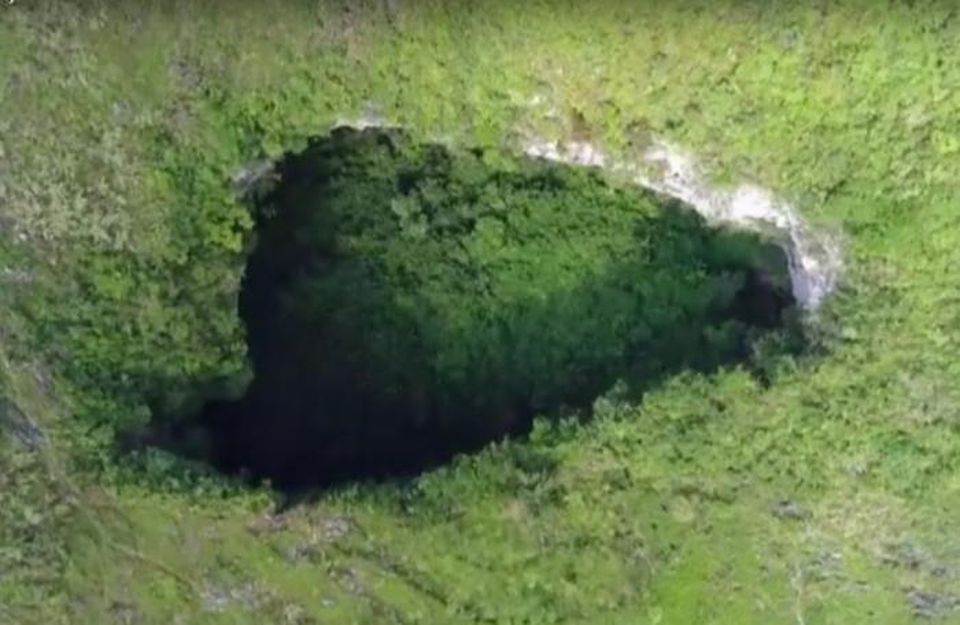
Source: forbes.com
Part of a much larger system of caves and connective channels worn through the limestone deposits in the Nongle mountains, this sinkhole also contains a massive cave hall. This beautiful geological formation is called the Hong Kong Haiting Hall, and offers an awe-inspiring variety of geographical features to study and observe.
Did You Know?
The brave Chinese and British speleologist team who discovered the giant cave hall in the Nongle Sinkhole lowered themselves into its depths with only a single rope!
-
The Devil’s Sinkhole
Location: Texas, USA
Width: 60 feet
Nearby Landmarks: Edwards Plateau
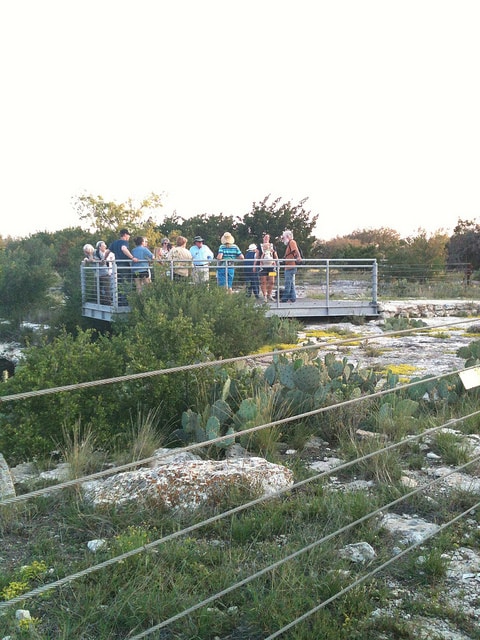
Source: flickr.com
This impressive Texan landmark draws tourists from far and wide not only for its impressive structure, but for its breathtaking bat flights. The Devil’s Sinkhole is home to one of the largest colonies of Mexican Free-tailed Bats in Texas, and is the largest single-chamber cavern in the state.
Did You Know?
Tourist accessibility is managed by the Devil’s Sinkhole Society, and tours must be booked in advance. Visitors are not allowed to enter the sinkhole itself, but can get a great view down into the cavern from the top.
-
Great Blue Hole
Location: Belize
Width: 1,043 feet
Nearby Landmarks: Lighthouse Reef
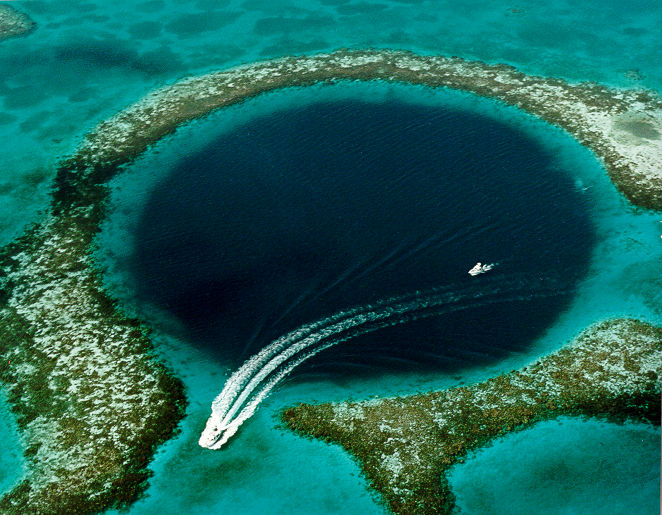
Source: wikimedia.org
Underwater sinkholes are known as Blue Holes when their entrance is submerged as well. The Great Blue Hole is one of the most stunning examples you’ll ever see, with its delightfully uniform circular shape and deep blue color. It is a prime diving spot, renowned for its beauty and diverse marine life.
Did You Know?
Along with a fascinating array of sharks and colorful fish, the Great Blue Hole is home to 150 types of coral.
-
Qattara Depression
Location: Matrouh Governorate, Egypt
Width: 84 miles
Nearby Landmarks: Siwa Oasis
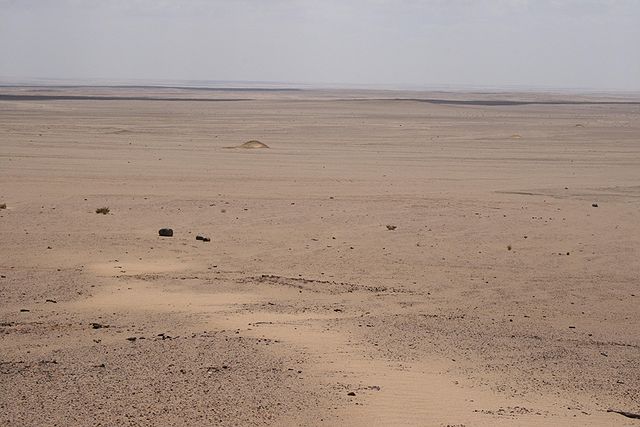
Source: wikimedia.org
The Qattara Depression rests below sea level and sports a unique variety of salt pans, dunes, and marshes within. During the late 1970’s, oil deposits were also discovered in the southern portion of the depression. Aside from its size, the Qattara Depression also deserves recognition for being the second lowest point in Africa.
Did You Know?
The Qattara Depression covers 7,500 square miles of the Libyan Desert, and is regarded as one of the largest sinkhole in terms of width.
-
Dean’s Blue Hole
Location: The Bahamas
Width: 115 feet
Nearby Landmarks: Clarence Town
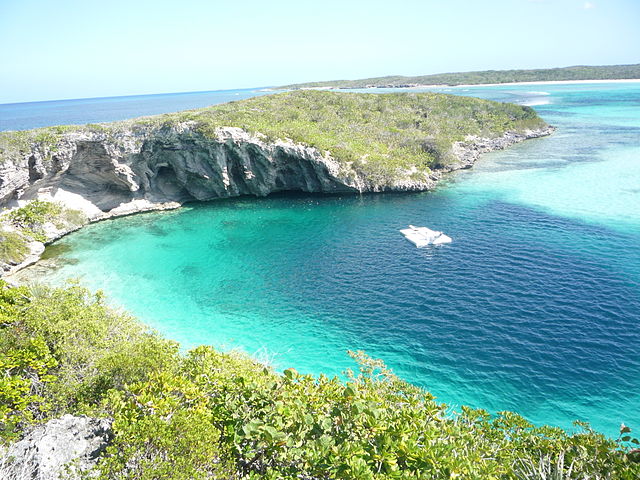
Source: wikimedia.org
The second-largest Blue Hole in the world, this striking underwater sinkhole astounds tourists with its beauty as well as with its size. With its turquoise waters, impressive depths, and diverse tropical fish population, Dean’s Blue Hole is regarded as a prime freediving location. This submerged sinkhole was once thought to be the largest in the world.
Did You Know?
Back in 2010, professional diver William Trubridge reached a depth of 302 feet without the use of fins, breaking the freediving world record for depth.
-
Berezniki (The Grandfather)
Location: Russia
Width: 1020 feet
Nearby Landmarks: Ural Mountains
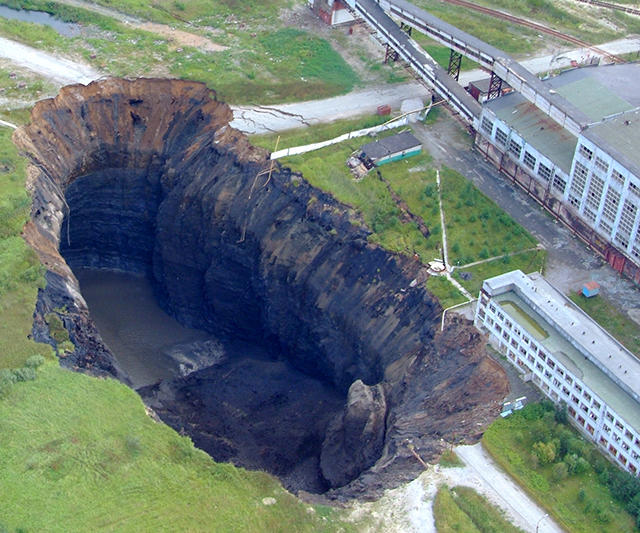
Source: wikimedia.org
The risk of sinkholes forming increases dramatically near mining areas as a result of flooding, and Berezniki is a prime example. The city of Berezniki originally began as a mining camp, meaning that it awaited disaster in dangerously close proximity to high-risk salt mining areas. Sinkholes can appear suddenly, requiring Berezniki to undergo 24-hour surveillance to look out for warning signs of further collapse.
Did You Know?
“The Grandfather” is the largest sinkhole in Berezniki, and it plunges directly down into the salt deposits below the city.
-
Crveno Jezero (Red Lake)
Location: Croatia
Width: 2624 feet
Nearby Landmarks: Blue Lake
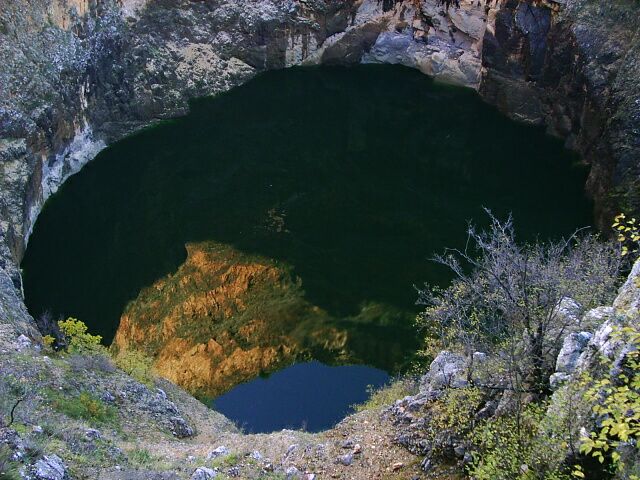
Source: wikimedia.org
This impressive Croatian sinkhole contains a karst, and gets its name from the red cliffs that surround its lake. The red color became distinct over time as a result of iron oxides present in the rock. This iron oxide creates a distinct look in the Mediterranean landscape, which is referred to as “Terra Rossa”.
Did You Know?
The waters of Crveno Jezero and its neighboring lakes are home to the endangered spotted minnow (Delminichthys adspersus), which is exclusively endemic to the Dinaric Alps.
-
Dragon Hole
Location: Paracel Islands, South China Sea
Width: 426 feet
Nearby Landmarks: Yongle Coral Reef
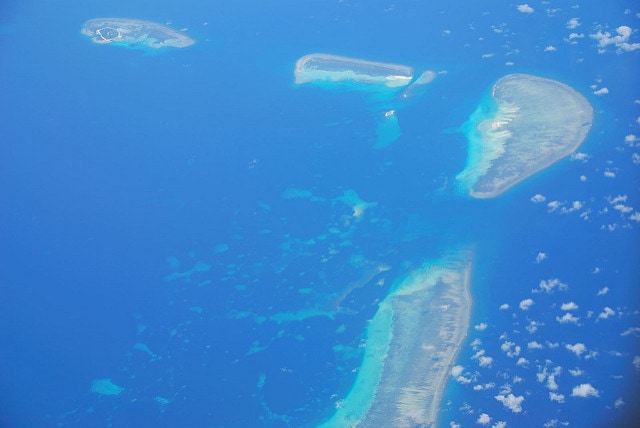
Source: flickr.com
Dragon Hole is the largest Blue Hole in the world. While official study of Dragon Hole began in 2015, this natural landmark has been a part of Chinese lore for centuries. This Blue Hole is referred to by local fishermen as the eye of the South China Sea, and is believe to be where the Monkey King found his golden weapon.
Did You Know?
Alongside its breathtaking beauty and record-breaking size, Dragon Hole holds scientific value, as scientists can use it to investigate changing climates and water levels.
-
Sima Humboldt
Location: Venezuela
Width: 1,155 feet
Nearby Landmarks: Sima Martel
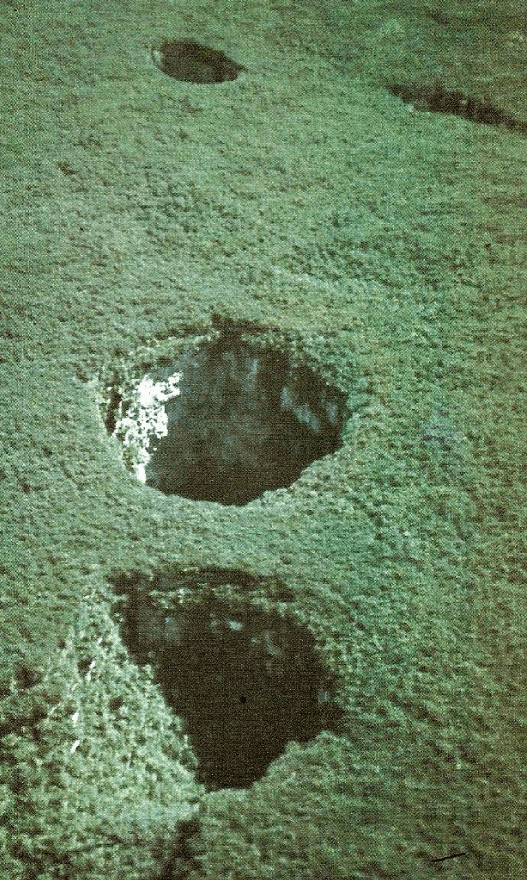
Source: wikimedia.org
This sinkhole and its neighbor, Sima Martel, were originally discovered by the pilot Harry Gibson. An expedition later in 1974 aimed to conduct a more in-depth exploration of the massive sinkholes, but its members discovered that getting back out was much harder than going in. After several different methods were attempted, the crew finally made it out using cable ladders.
Did You Know?
Sima Humboldt is found on Cerro Sarisariñama, one of many tabletop mountains present in the Guiana Highlands of South America.
-
Xiaozhai Tiankeng
Location: Chongqing, China
Width: 2,054 feet
Nearby Landmarks: Xiaozhai Village
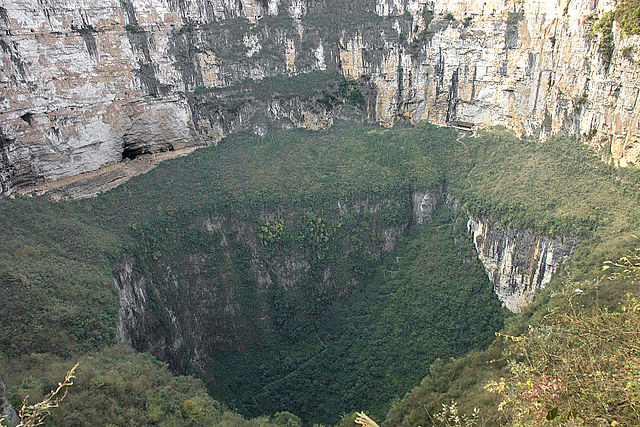
Source: wikimedia.org
Xiaozhai Tiankeng is the largest sinkhole in the world by depth. Nicknamed “The Heavenly Pit,” this sinkhole boasts two beautiful, nested craters. The upper crater is 1,050 feet deep, while the second crater gives an added depth of 1,122 feet.
Its steel, vertical sides give it a distinct appearance, and the thriving ecosystem at its bottom is home to several rare plant and animal species. While British specialists first discovered this sinkhole in 1994, it has been well-known among the Chinese since ancient times.
Did You Know?
The extreme depth of Xiaozhai Tiankeng has earned it recognition from geologists as a “World Class” geological wonder.
